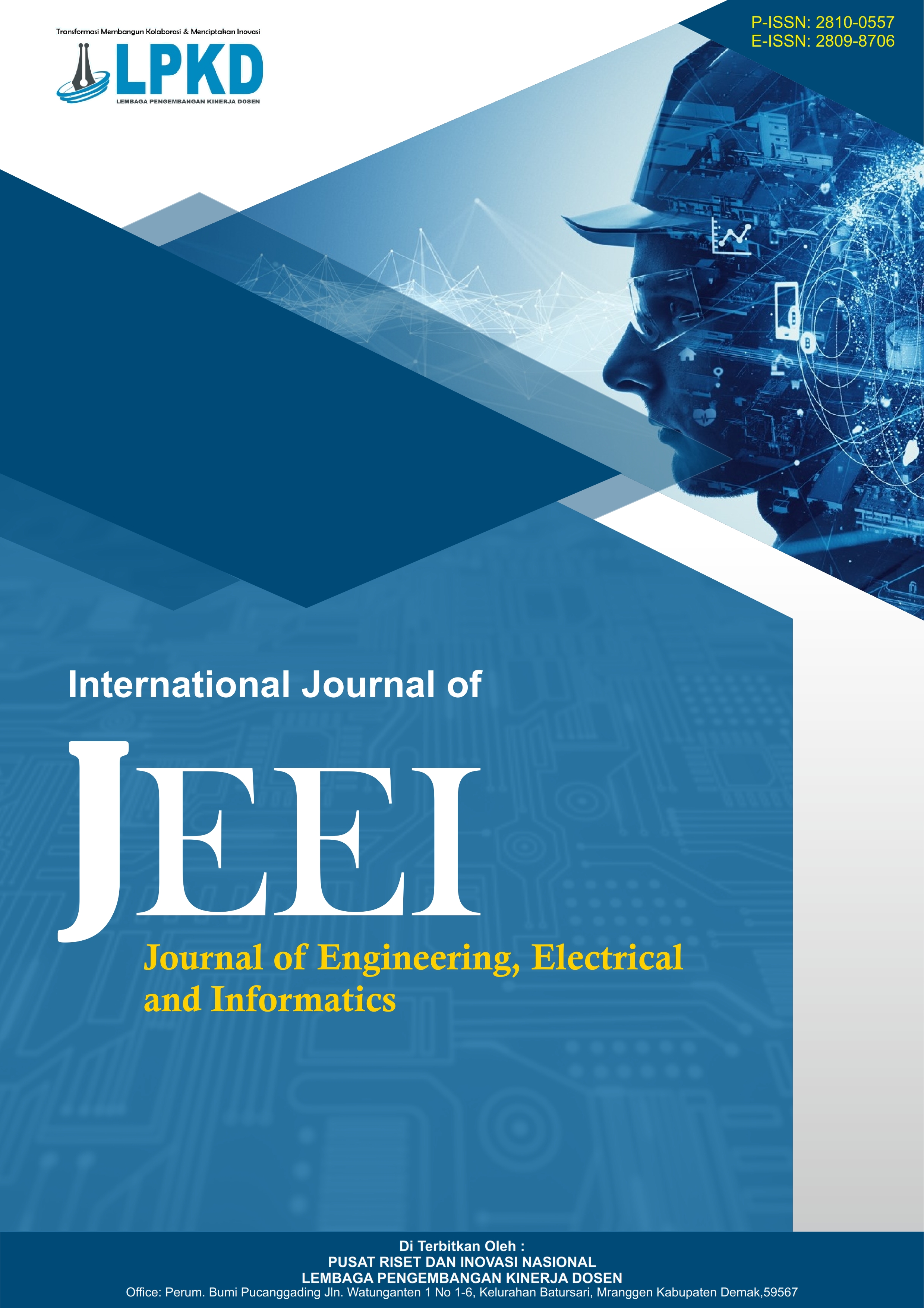Exploring the Synergy Between Artificial Intelligence and Blockchain in Enhancing Cybersecurity Solutions
DOI:
https://doi.org/10.55606/jeei.v5i3.5567Keywords:
Artificial Intelligence, Blockchain, Cybersecurity, Data Integrity, Cyberse Threat DetectionAbstract
This research investigates the integration of Artificial Intelligence (AI) and blockchain technologies to develop a more robust and adaptive cybersecurity framework. Amid the growing complexity and frequency of cyber threats, traditional security systems are increasingly insufficient in ensuring data integrity, threat detection, and operational transparency. The study aims to explore how the synergy between AI and blockchain can address these limitations and enhance digital security infrastructures. A qualitative exploratory approach was employed, utilizing a Systematic Literature Review (SLR) of 42 peer-reviewed articles published between 2020 and 2025. The analysis revealed three dominant integration models: AI-based anomaly detection with blockchain-secured logging, smart contracts for automated incident response, and blockchain-based identity verification enhanced by AI behavioral analysis. The proposed framework demonstrated a high detection rate (94.3%), low response latency (0.7 seconds), and improved auditability compared to state-of-the-art approaches. These findings suggest that combining AI's predictive capabilities with blockchain’s immutable and decentralized architecture offers a more comprehensive cybersecurity solution. However, challenges such as computational overhead, energy consumption, and interoperability issues remain. The study concludes that the integrated approach not only enhances resilience and transparency but also provides a scalable foundation for future cybersecurity systems, especially in critical sectors such as healthcare, finance, and government services.
References
Al-Hamdani, M. (2023). AI-based adaptive security for distributed ledger systems. Journal of Information Security and Applications, 71, 103492. https://doi.org/10.1016/j.jisa.2023.103492
Ali, J., Khan, S. A., & Hussain, F. (2021). Smart contract-based cybersecurity for IoT: A blockchain approach. Computers & Security, 109, 102390. https://doi.org/10.1016/j.cose.2021.102390
Casino, M., Dasaklis, T. K., & Patsakis, C. (2020). A systematic literature review of blockchain-based applications: Current status, classification and open issues. Telematics and Informatics, 36, 55–81. https://doi.org/10.1016/j.tele.2018.11.006
Creswell, J., & Poth, C. N. (2020). Qualitative inquiry and research design: Choosing among five approaches (4th ed.). Sage.
Cai, H., Xu, Y., & Li, J. (2021). Blockchain and AI integration for secure IoT communication. Future Generation Computer Systems, 127, 362–375. https://doi.org/10.1016/j.future.2021.09.024
Gupta, S. K., & Dey, D. (2023). Integrating AI and blockchain for trustable cybersecurity frameworks. IEEE Transactions on Engineering Management, 70(3), 650–661. https://doi.org/10.1109/TEM.2022.3190058
Hussain, M., Fatima, S., & Shaukat, N. (2021). Deep learning approaches for intrusion detection in cybersecurity. Information Sciences, 578, 401–421. https://doi.org/10.1016/j.ins.2021.07.009
IBM Security. (2023). X-Force threat intelligence index 2023. IBM Corporation.
Khan, Y., Ullah, F., & Alam, M. (2021). AI-driven cybersecurity: A review and open research challenges. Computers & Electrical Engineering, 91, 107033. https://doi.org/10.1016/j.compeleceng.2021.107033
Kumar, P., Singh, M., & Kumar, V. (2021). Artificial intelligence-based anomaly detection in cybersecurity. Expert Systems with Applications, 185, 115665. https://doi.org/10.1016/j.eswa.2021.115665
Mayring, P. (2021). Qualitative content analysis: Theoretical foundation, basic procedures and software solution. Social Science Open Access Repository. https://doi.org/10.48541/dcr.v2021.55
Page, L., et al. (2021). The PRISMA 2020 statement: An updated guideline for systematic reviews. PLoS Medicine, 18(3), e1003583. https://doi.org/10.1371/journal.pmed.1003583
Radanliev, A., De Roure, D., & Santos, O. (2020). Cyber risk impact assessment in digital supply chains using emerging technologies. Computers & Security, 97, 101935. https://doi.org/10.1016/j.cose.2020.101935
Rejeb, A., Rejeb, K., & Keogh, H. (2021). Blockchain technology in cybersecurity: A systematic review. Computers & Industrial Engineering, 160, 107589. https://doi.org/10.1016/j.cie.2021.107589
Setiadi, D. R. I. M., Rustad, S., Andono, P. N., & Shidik, G. F. (2023). Survey and investigation of digital image steganography. Signal Processing, 206, 108908. https://doi.org/10.1016/j.sigpro.2022.108908
Sharma, S., Bhushan, K., & Reddy, D. (2020). Machine learning techniques for anomaly detection in network security. IEEE Transactions on Network and Service Management, 17(4), 2318–2330. https://doi.org/10.1109/TNSM.2020.3029156
Singh, A. K., & Uddin, T. (2022). Blockchain-enabled cybersecurity framework for e-government systems. IEEE Access, 10, 112934–112946. https://doi.org/10.1109/ACCESS.2022.3210527
Singh, M., Kaur, P., & Kumar, D. (2020). Hybrid AI–blockchain model for securing cyber-physical systems. IEEE Access, 8, 139033–139045. https://doi.org/10.1109/ACCESS.2020.3013130
Snyder, H. (2019). Literature review as a research methodology: An overview and guidelines. Journal of Business Research, 104, 333–339. https://doi.org/10.1016/j.jbusres.2019.07.039
Zhao, J., Liu, L., & Wu, Y. (2021). Secure IoT framework based on blockchain and deep learning. IEEE Internet of Things Journal, 8(7), 5705–5715. https://doi.org/10.1109/JIOT.2020.3032082



.png)
.png)


